Archives
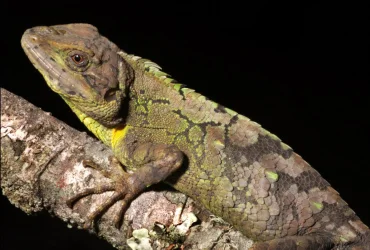 v13i1.320
v13i1.320ISSN: 1800-427X (printed)
eISSN: 1800-427X (online)
DOI:10.47605/tapro.v13i1.320
Submitted date: 6 June 2023
Accepted date: 30 April 2024
Published date: 30 May 2024
Pp. 25.
An opportunistic mating attempt of a flower crab spider (Thomisus sp.), India
A. Mhadgut*
*Corresponding author. E-mail: naturetalks2320@gmail.com
Flower crab spiders of the genus Thomisus, Walckenaer, 1805 have a crab-like habitus with its first two pairs of legs that are long and robust. The Thomisus spiders do not build webs, but instead capture their prey using ambush, or sometimes by active pursuit hiding in flowers, leaves, and leaf litter. Some species flatten their bodies to hunt inside crevices or tree trunks under loose bark. Most of the Thomisus species are sexually dimorphic, males are much smaller than females. On 2 November 2020, I observed a female crab spider capturing a chestnut bob butterfly (Lambrix salsala) while it was trying to feed on the nectar of Jamaican spike flowers, Stachytarpheta jamaicensis (Verbenaceae) in the Butterfly Garden located at Sanjay Gandhi National Park (SGNP), Maharashtra, India.
Section Editor: Ayan Mondal
eISSN: 1800-427X (online)
DOI:10.47605/tapro.v13i1.320
Submitted date: 6 June 2023
Accepted date: 30 April 2024
Published date: 30 May 2024
Pp. 25.
An opportunistic mating attempt of a flower crab spider (Thomisus sp.), India
A. Mhadgut*
*Corresponding author. E-mail: naturetalks2320@gmail.com
Flower crab spiders of the genus Thomisus, Walckenaer, 1805 have a crab-like habitus with its first two pairs of legs that are long and robust. The Thomisus spiders do not build webs, but instead capture their prey using ambush, or sometimes by active pursuit hiding in flowers, leaves, and leaf litter. Some species flatten their bodies to hunt inside crevices or tree trunks under loose bark. Most of the Thomisus species are sexually dimorphic, males are much smaller than females. On 2 November 2020, I observed a female crab spider capturing a chestnut bob butterfly (Lambrix salsala) while it was trying to feed on the nectar of Jamaican spike flowers, Stachytarpheta jamaicensis (Verbenaceae) in the Butterfly Garden located at Sanjay Gandhi National Park (SGNP), Maharashtra, India.
Section Editor: Ayan Mondal
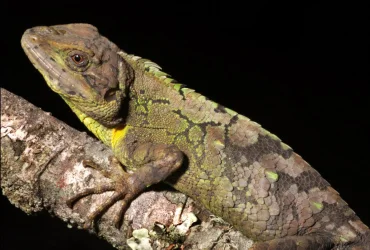 v13i1.319
v13i1.319ISSN: 1800-427X (printed)
eISSN: 1800-427X (online)
DOI:10.47605/tapro.v13i1.319
Submitted date: 10 April 2024
Accepted date: 15 May 2024
Published date: 30 May 2024
Pp. 16–24, pl. 8.
MOLECULAR IDENTIFICATION OF PYTHON SPECIES (SQUAMATA: PYTHONIDAE) FROM MIZORAM, NORTHEAST INDIA, WITH COMMENTS ON WILDLIFE TRAFFICKING
Hmar T. Lalremsanga*, Annie Malsawmkimi, Mathipi Vabeiryureilai, Lal Muansanga, Fanai Malsawmdawngliana, Lal Biakzuala & Olivier S.G. Pauwels
*Corresponding author. E-mail: opauwels@naturalsciences.be
Abstract
Pythonidae, an ancient group of Old World, wide-ranging, constrictor snakes, are known to contain a high degree of cryptic diversity. India harbours three python species, Python molurus, P. bivittatus, and Malayopython reticulatus. The former two species are not uncommon within their respective distribution range in India, but occurrence of the latter has only been confirmed in the Nicobar Islands, and there are two orphaned records from eastern West Bengal. We confirm the occurrence of P. bivittatus and M. reticulatus in Northeast India based on genetics using the mitochondrial cytochrome b gene and morphological characters. Our study reveals multiple lineages among M. reticulatus, corroborating previous studies, and further reveals the absence of a barcode gap between sequences submitted as P. molurus and P. bivittatus among the sampled DNA sequences, and an unexpected lineage of Northeast Indian P. bivittatus based on a sample divergent from the East and Southeast Asian populations that will need further systematic assessment.
Key words : Burmese python, DNA barcoding, phylogenetics, reticulated python, wildlife forensic
Section Editor: Thasun Amarasinghe
eISSN: 1800-427X (online)
DOI:10.47605/tapro.v13i1.319
Submitted date: 10 April 2024
Accepted date: 15 May 2024
Published date: 30 May 2024
Pp. 16–24, pl. 8.
MOLECULAR IDENTIFICATION OF PYTHON SPECIES (SQUAMATA: PYTHONIDAE) FROM MIZORAM, NORTHEAST INDIA, WITH COMMENTS ON WILDLIFE TRAFFICKING
Hmar T. Lalremsanga*, Annie Malsawmkimi, Mathipi Vabeiryureilai, Lal Muansanga, Fanai Malsawmdawngliana, Lal Biakzuala & Olivier S.G. Pauwels
*Corresponding author. E-mail: opauwels@naturalsciences.be
Abstract
Pythonidae, an ancient group of Old World, wide-ranging, constrictor snakes, are known to contain a high degree of cryptic diversity. India harbours three python species, Python molurus, P. bivittatus, and Malayopython reticulatus. The former two species are not uncommon within their respective distribution range in India, but occurrence of the latter has only been confirmed in the Nicobar Islands, and there are two orphaned records from eastern West Bengal. We confirm the occurrence of P. bivittatus and M. reticulatus in Northeast India based on genetics using the mitochondrial cytochrome b gene and morphological characters. Our study reveals multiple lineages among M. reticulatus, corroborating previous studies, and further reveals the absence of a barcode gap between sequences submitted as P. molurus and P. bivittatus among the sampled DNA sequences, and an unexpected lineage of Northeast Indian P. bivittatus based on a sample divergent from the East and Southeast Asian populations that will need further systematic assessment.
Key words : Burmese python, DNA barcoding, phylogenetics, reticulated python, wildlife forensic
Section Editor: Thasun Amarasinghe
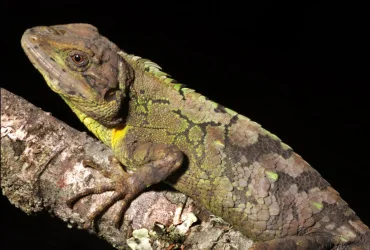 v13i1.318
v13i1.318ISSN: 1800-427X (printed)
eISSN: 1800-427X (online)
DOI:10.47605/tapro.v13i1.318
Submitted date: 10 January 2024
Accepted date: 21 May 2024
Published date: 30 May 2024
Pp. 9–15, pls. 6–7.
A FURTHER TAXONOMIC REASSESSMENT OF Cyrtodactylus madarensis SHARMA, 1980 (SQUAMATA: GEKKONIDAE) NOW IN THE GENUS Eublephairs Gray, 1827 (SQUAMATA: EUBLEPHARIADE)
Zeeshan A. Mirza*
*Corresponding author. E-mail: snakeszeeshan@gmail.com
Abstract
A recent phylogenetic study identified the population of Eublepharis Gray, 1827, from Rajasthan (India) as a distinct taxon from Eublepharis macularius (Blyth, 1854). A taxonomic reassessment of the population based on literature, existing museum material and molecular data allowed me to assign the name Eublepharis madarensis (Sharma, 1980) to this population. A redescription and rediagnosis of the species are presented based on museum material and images of uncollected individuals. A discussion on the assignment of the nomen ‘madarensis’ is presented. The species appears to be distributed along the Aravalli hills, and most records of the species lie outside of protected areas.
Key words : Eublepharidae, India, Sauria, synonymy, taxonomy
Section Editor: Thasun Amarasinghe
eISSN: 1800-427X (online)
DOI:10.47605/tapro.v13i1.318
Submitted date: 10 January 2024
Accepted date: 21 May 2024
Published date: 30 May 2024
Pp. 9–15, pls. 6–7.
A FURTHER TAXONOMIC REASSESSMENT OF Cyrtodactylus madarensis SHARMA, 1980 (SQUAMATA: GEKKONIDAE) NOW IN THE GENUS Eublephairs Gray, 1827 (SQUAMATA: EUBLEPHARIADE)
Zeeshan A. Mirza*
*Corresponding author. E-mail: snakeszeeshan@gmail.com
Abstract
A recent phylogenetic study identified the population of Eublepharis Gray, 1827, from Rajasthan (India) as a distinct taxon from Eublepharis macularius (Blyth, 1854). A taxonomic reassessment of the population based on literature, existing museum material and molecular data allowed me to assign the name Eublepharis madarensis (Sharma, 1980) to this population. A redescription and rediagnosis of the species are presented based on museum material and images of uncollected individuals. A discussion on the assignment of the nomen ‘madarensis’ is presented. The species appears to be distributed along the Aravalli hills, and most records of the species lie outside of protected areas.
Key words : Eublepharidae, India, Sauria, synonymy, taxonomy
Section Editor: Thasun Amarasinghe
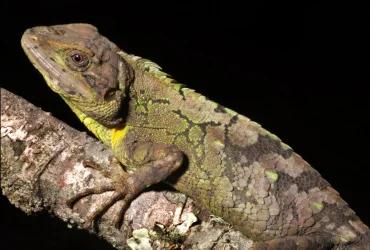 v13i1.317
v13i1.317ISSN: 1800-427X (printed)
eISSN: 1800-427X (online)
DOI:10.47605/tapro.v13i1.317
Submitted date: 10 January 2024
Accepted date: 21 May 2024
Published date: 30 May 2024
Pp. 1–8, pls. 1–5.
A NEW MONTANE-DWELLING SPECIES OF Japalura GRAY, 1853 (SQUAMATA: AGAMIDAE) FROM ARUNACHAL PRADESH, INDIA
Zeeshan A. Mirza*, Gaurang Gowande, Tejas Thackeray, Harshal Bhosale, Mandar Sawant, Pushkar Phansalkar & Harshil Patel
*Corresponding author. E-mail: snakeszeeshan@gmail.com
Abstract
The montane agamid lizard Japalura austeniana (Annandale, 1908), is rare and is distributed across parts of the eastern Himalayas of India and China. Support from molecular and morphological data provide evidence for the existence of a species complex in the populations referred to as that binomen, and we here describe a morphologically cryptic allied new species. Evidence from molecular data suggests the presence of additional undescribed species across the distribution of that species complex. Elevation might be the restricting factor for gene flow explaining most of the diversification of that montane species complex across the Himalayas.
Key words : Agamidae, biodiversity hotspot, biogeography, conservation, Himalayas, systematics
Section Editor: Ivan Ineich
LSID:urn:lsid:zoobank.org
eISSN: 1800-427X (online)
DOI:10.47605/tapro.v13i1.317
Submitted date: 10 January 2024
Accepted date: 21 May 2024
Published date: 30 May 2024
Pp. 1–8, pls. 1–5.
A NEW MONTANE-DWELLING SPECIES OF Japalura GRAY, 1853 (SQUAMATA: AGAMIDAE) FROM ARUNACHAL PRADESH, INDIA
Zeeshan A. Mirza*, Gaurang Gowande, Tejas Thackeray, Harshal Bhosale, Mandar Sawant, Pushkar Phansalkar & Harshil Patel
*Corresponding author. E-mail: snakeszeeshan@gmail.com
Abstract
The montane agamid lizard Japalura austeniana (Annandale, 1908), is rare and is distributed across parts of the eastern Himalayas of India and China. Support from molecular and morphological data provide evidence for the existence of a species complex in the populations referred to as that binomen, and we here describe a morphologically cryptic allied new species. Evidence from molecular data suggests the presence of additional undescribed species across the distribution of that species complex. Elevation might be the restricting factor for gene flow explaining most of the diversification of that montane species complex across the Himalayas.
Key words : Agamidae, biodiversity hotspot, biogeography, conservation, Himalayas, systematics
Section Editor: Ivan Ineich
LSID:urn:lsid:zoobank.org
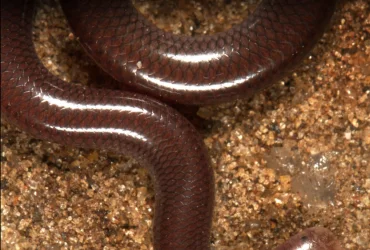 v12i2.316
v12i2.316eISSN: 1800-427X (online)
DOI:10.47605/tapro.v12i2.316
Submitted date: 5 December 2022
Accepted date: 10 November 2023
Published date: 18 November 2023
Pp. 111–114.
An account of family Orchidaceae in a part of Northern Western Ghats India
M.M. Bhagwat, D.M. Mahajan* & M. Kulkarni
*Corresponding author. E-mail: mahajandm@gmail.com
The Western Ghats of India is known across the world as a biodiversity hotspot due to its rich plant and animal diversity. Orchids are most abundant in this humid tropical and subtropical region. India has 1331 orchid species distributed over 186 genera, of which 400 are endemic. Many orchid species have been reported from Mulshi (alt. 600–1,131 m a.s.l.) which falls in the Northern Western Ghats of Maharashtra. Recently, Jalal & Jayanthi (2018, 2019) recorded 32 genera and 107 species of orchids from the northern Western Ghats. The vegetation is diverse from moist to dry deciduous forests with some semi evergreen elements and open grasslands.
Section Editor: Pankaj Kumar
DOI:10.47605/tapro.v12i2.316
Submitted date: 5 December 2022
Accepted date: 10 November 2023
Published date: 18 November 2023
Pp. 111–114.
An account of family Orchidaceae in a part of Northern Western Ghats India
M.M. Bhagwat, D.M. Mahajan* & M. Kulkarni
*Corresponding author. E-mail: mahajandm@gmail.com
The Western Ghats of India is known across the world as a biodiversity hotspot due to its rich plant and animal diversity. Orchids are most abundant in this humid tropical and subtropical region. India has 1331 orchid species distributed over 186 genera, of which 400 are endemic. Many orchid species have been reported from Mulshi (alt. 600–1,131 m a.s.l.) which falls in the Northern Western Ghats of Maharashtra. Recently, Jalal & Jayanthi (2018, 2019) recorded 32 genera and 107 species of orchids from the northern Western Ghats. The vegetation is diverse from moist to dry deciduous forests with some semi evergreen elements and open grasslands.
Section Editor: Pankaj Kumar
Hubungi Kami
The ultimate aim of the journal is to provide an effective medium for communication of the latest and best scientific information.
Copyright © 2020 Taprobanica. All Rights Reserved
Jasa Pembuatan Website by IKT




